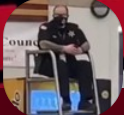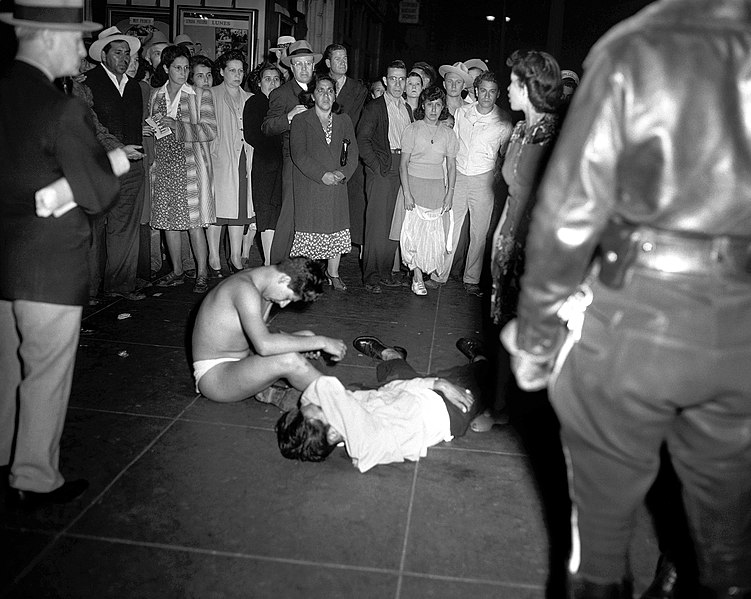- cross-posted to:
- workingclasscalendar
stahmaxffcqankienulh.supabase.co
- cross-posted to:
- workingclasscalendar
cross-posted from: https://lemmy.world/post/16120967
Zoot Suit Riots (1943) On this day in 1943, the Zoot Suit Riots began when thousands of white American servicemen in California began indiscriminately attacking people (mostly Latinos) wearing…
Zoot Suit Riots (1943)
Thu Jun 03, 1943
Image: Two boys, beaten during the Zoot Suit riots, lie in the street, surrounded by a crowd. One is stripped down to his underwear. [Wikipedia]
On this day in 1943, the Zoot Suit Riots began when thousands of white American servicemen in California began indiscriminately attacking people (mostly Latinos) wearing Zoot Suits, which were seen as unpatriotic. The suits were ostensibly seen as unpatriotic due to wartime rations, although they were also racialized, with L.A. Councilman Norris Nelson stating “the zoot suit has become a badge of hoodlumism”.
The riots began on the night of June 3rd when ~12 sailors and a group of young Mexicans in zoot suits began fighting. The LAPD responded to the incident “seeking to clean up Main Street from what they viewed as the loathsome influence of pachuco gangs”, according to historian Luis Alvarez. The police arrested the sailors and not the Mexicans.
The next day, 200 sailors headed for East Los Angeles, a Mexican-American part of town, and attacked and stripped everyone they came across who were wearing zoot suits. Local press heralded the violence as cleaning up the town, and soon thousands of sailors joined the riot. Journalist Carey McWilliams described what happened like this:
“Marching through the streets of downtown Los Angeles, a mob of several thousand soldiers, sailors, and civilians, proceeded to beat up every zoot suiter they could find. Pushing its way into the important motion picture theaters, the mob ordered the management to turn on the house lights and then ran up and down the aisles dragging Mexicans out of their seats. Streetcars were halted while Mexicans, and some Filipinos and Negroes, were jerked from their seats, pushed into the streets and beaten with a sadistic frenzy.”
The L.A. City Council approved a resolution criminalizing zoot suits, although the ordinance was not signed into law. The Navy and Marine Corps Staff prohibited sailors from traveling to L.A. in an effort to curb the violence, however they officially maintained that the men were acting in self-defense.
- Date: 1943-06-03
- Learn More: en.wikipedia.org, libcom.org.
- Tags: #Riots.
- Source: www.apeoplescalendar.org



Google, what’s a Zoot Suit?
From Smithsonian Magazine: